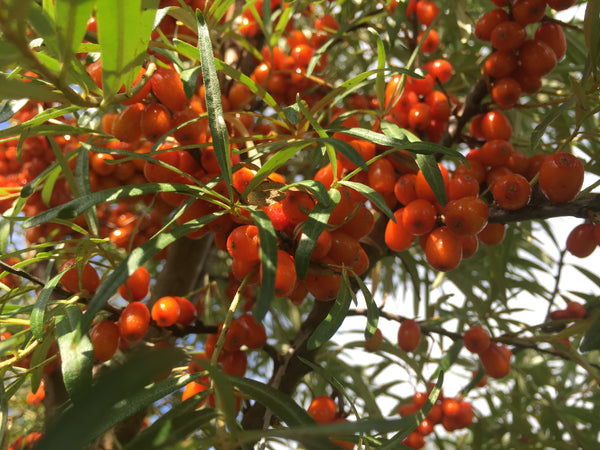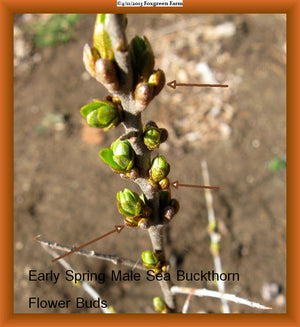TATIANA sea buckthorn
Shipping calculated at checkout
115 in stock
Need more? Contact us
This tree needs pollination
Compatible trees:
LORD male sea buckthorn
LORD male sea buckthorn
- Size/habit
-
- Medium-sized shrub, approximately 2.5-3 m according to some sources. The habit is more compact than that of several other commercial Latvian cultivars.
- Thorns
- Few thorns, which makes harvesting easier.
- Berries
- Color: dark orange/deep orange-red when ripe.
-
- Average weight: approximately 0.5 to 0.9 grams per berry, or approximately 72 g per 100 berries, according to estimates.
-
- Firmness: berries remain firm on the plant for 4 to 6 weeks, allowing for a fairly long harvesting window.
- Harvest
- Generally from mid-August to early September depending on the region, often when the berries are fully ripe.
- Production
- After about 3 years once planted.
- Hardiness/climate
- Very cold-resistant. It is said to be able to withstand harsh winters (hardiness zones ranging from 2b to 9a according to some sellers), making it suitable for cold climates.
Uses and benefits
- Oil: Tatiana berries have a high oil content, making them an excellent choice for commercial and nutraceutical oil extraction.
- Food/drink: Strong, pleasant taste but more astringent due to higher total acidity. Useful for beverages, juices, or other food preparations where this contrast between acidity and aroma is desirable.
- Ornamental/garden: Silvery foliage, decorative appearance, colorful berries. Compact growth habit and few thorns make it easy to maintain in home gardens.
- Nutraceutical value/chemical composition: In comparative studies, ‘Tatiana’ is among the varieties whose large berries (0.5-1 g) are exported.
- Environment: Like all sea buckthorns, ‘Tatiana’ fixes nitrogen, can help stabilize soils, resist climatic stress, etc.
What to watch out for / limitations
- Pollination required: This is a female cultivar. To produce fruit, a male plant must be nearby (often 1 male for every 5-8 females is recommended, depending on the retailer) to ensure proper pollination.
- Tart/astringent flavor: If you like very sweet flavors, ‘Tatiana’ may seem more tart or astringent than other cultivars. You may need to sweeten it or mix it with other flavors.
- Harvest: Even though the harvest window is quite long and the berries remain firm, picking can still be a little tricky depending on the arrangement of the branches (even though there are few thorns).
- Local adaptation: Although hardy, the local climate, soil, sunlight, and other conditions will have an impact on production. Testing the variety in your area is still a good idea.
Hardiness Zones
Specific port
Growth speed
Number of years for production
3 ans



